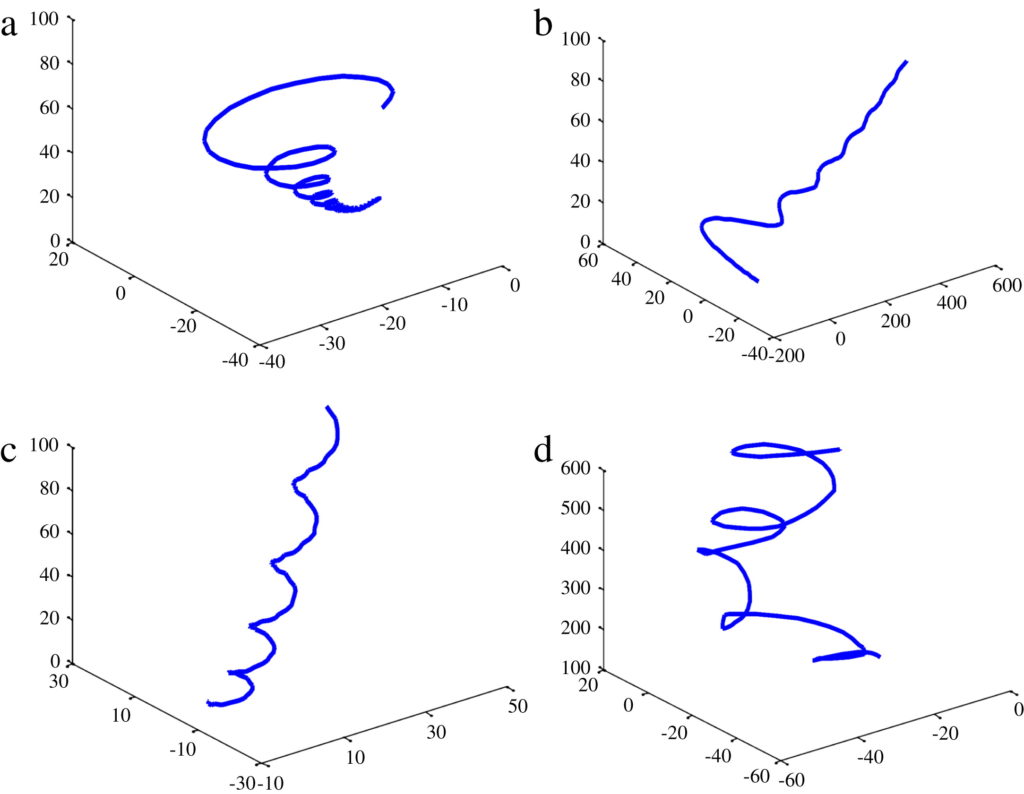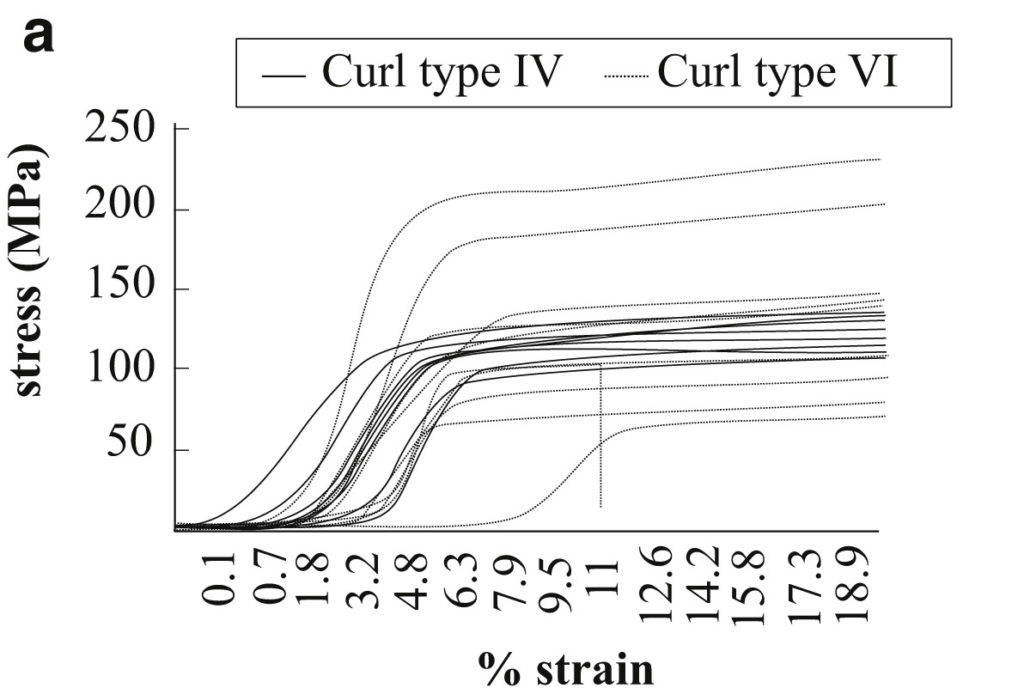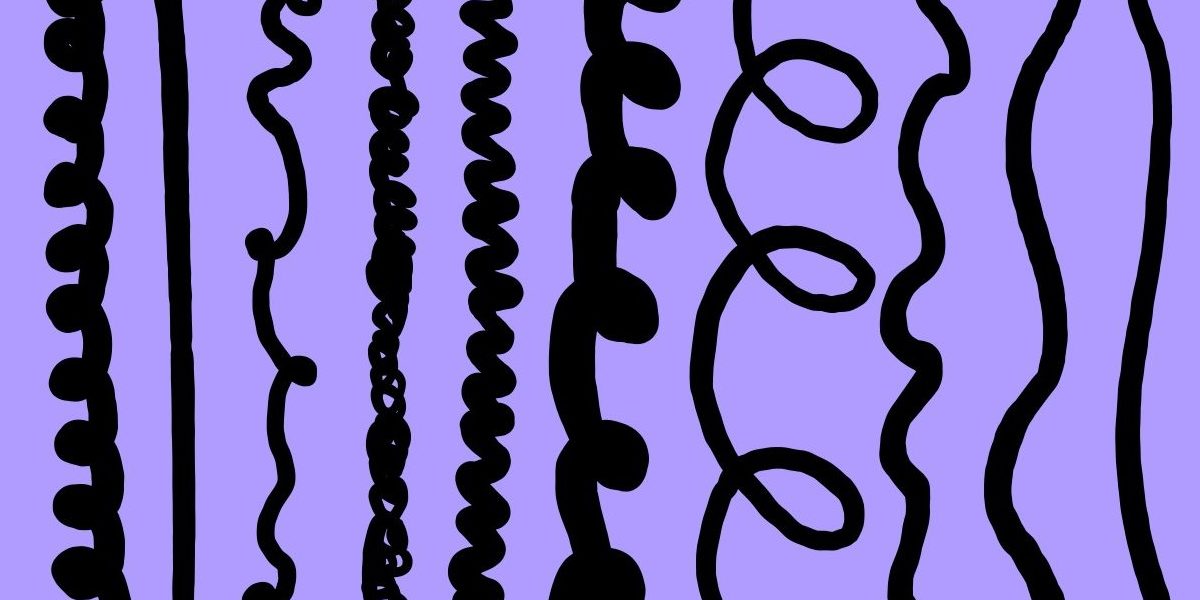The average human has more than 100,000 hairs on their head, and no two are the same. Every individual hair has its own distinct properties, resulting in a wide range of hair types and prompting endless questions. Why does hair curl? Which hair type is the strongest? How can these answers lead to more curated hair care? These questions can be investigated through understanding what mechanical processes cause a curled hair fiber and exploring the differences between the mechanical properties of straight and curly hair.
How Does Mechanical Stress Make Hair Curly?

Each hair on your head grows directly out of a tiny hair follicles on your scalp. These follicles can have different shapes, ranging from ovular to circular. As the hair grows, the hair follicle exerts a force against the strand of hair. It is this force that determines the geometry of a strand of hair, with larger forces resulting in curlier hairs. You may be more familiar with this phenomenon than you realize: have you ever curled a ribbon using the blade of a scissor? The force applied to the ribbon is what causes it to curl, same as on a human head. Curly hair follicles are often more ovular or elliptical, while straight hair follicles are circular.
Researchers Baoxing Xu and Xi Chen decided to explicitly investigate how the variety of forces exerted by the hair follicle on the hair change the geometry of the strand. In their experiment, they varied both the magnitude and the rate of the applied force to see how it results in different hair shapes and patterns. Figure 1 to the left shows how the four different strands of hair responded to varied rates of a force. The shapes seen in this figure are reminiscent of real hair textures, allowing us to better understand the behavior of our own scalps and follicles.
How Does Curly Hair Affect Mechanical Properties?
It only makes sense that curly hair would have different internal mechanical properties than straight hair. Which hair type is stronger? This question is not so easily answered. The diversity and molecular complexity of hair fibers make it extremely difficult to understand the relationship between the geometry of hair and its mechanical properties.
Researchers Elsabe Cloete, Nonhlanhla P. Khumalo, and Malebogo N. Ngoepe experienced this difficulty when they studied the results of various hair samples under a tensile test. While they compiled a significant amount of data, the results of the research had some divergence in its behavior. Curly hair specimens had a relatively wide range of responses in the mechanical stress-strain curve, as seen in Figure 2 below. Clearly, the inconsistency in curly hair fibers challenges researchers trying to collect comprehensive data.

While all hairs are created through the same process, not all hairs are created equal. Researchers are still trying to understand the complexities of different hair textures. The mechanics behind hair properties can give insight on how to properly maintain and care for a wide variety of hair types; therefore, a holistic understanding of the mechanical factors at play can result in universal hair care for all textures and shapes.
